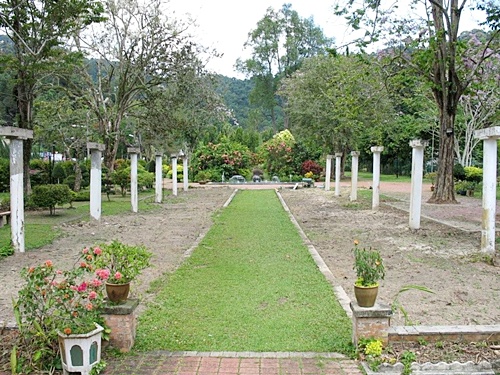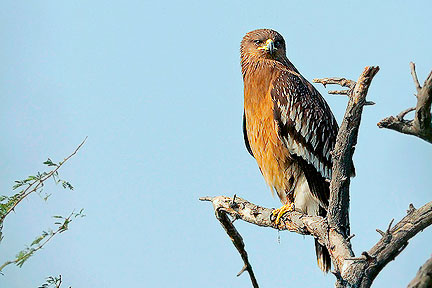The Dewan Sri Penang.
The City Hall housing the Municipal Council of Penang Island.
Chef Minister
The Chief Minister of Penang is Mr. Lim Guan Eng from the Democratic Action Party (DAP). Following the 12th general election of 8 March 2008, the coalition of DAP and Parti Keadilan Rakyat (PKR) formed the state government, with the chief ministership going to the former that emerged as the single largest party in the state legislature. Penang is the only state in Malaysia in which its chief ministership has been continuously held by a non-Malay ethnic Chinese since independence, reflecting the state's ethnic majority. Penang has two deputy chief ministers: Mr. Mansor Othman from PKR is Deputy Chief Minister I and Dr. P. Ramasamy of DAP is Deputy Chief Minister II. The latter made history by becoming by becoming the first ethnic Tamil to hold the deputy chief minister post. Ever since coming into power, Chief Minister Lim has been espousing a clean and efficient government based on CAT (Competency, Accountability, and Transparency)
Lim Guan Eng, The Chief Minister Of Penang.
When Parti Gerakan Rakyat Malaysia, a coalition member of the Barisan Nasional (BN), headed the then state government, there have been occasional calls by United Malays National Organisation (UMNO) its other coalition member, to rotate the position of chief minister among the BN component parties. However, this has consistently been rejected by the BN leadership. Such demand reached new heights in 2006 on allegations of the marginalisation of the Malay populace. Interestingly, one of the more vocal proponents is Khairy Jamaludin, the son-in-law of former Malaysian Prime Minister, Tun Abdullah Ahmad Badawi. It is to be noted that during Tun Dr. Mahathir bin Mohamad's tenure of prime ministership, he refuted claims of marginalisation by alluding to the Malay-governed state of Kelantan. In fact, Malays in Penang are only second to their counterparts in the Klang Valley. They fare better than those from other states such as Kedah, Perlis and Terengganu.
Local Authorities
There are two local authorities in Penang, the Municipal Council of Penang Island (Majlis Perbandaran Pulau Pinang) and the Municipal Council of Province Wellesley (Majlis Perbandaran Seberang Perai). Local councillors have been appointed by the state government since local elections were abolished in Malaysia in the 1960s. Both municipal councils are made up of a president, a municipal secretary and 24 councillors. The president is appointed by the State Government for two-year terms of office while the councillors are appointed for one-year terms of office. The state is divided into 5 administrative divisions:
Penang Island:
- -North-East District (Daerah Timur Laut)
- -South-West District (Daerah Barat Daya)
- Central Province Wellesley (Seberang Perai Tengah)
- Northern Province Wellesley (Seberang Perai Utara)
- Southern Province Wellesley (Seberang Perai Selatan)
Legislature
The unicameral state legislature, whose members are called state assemblymen, convenes at the neoclassical state Legislative Assembly (Dewan Undangan Negeri) building at Light Street. It has 40 seats, 19 of which are held by the Democratic Action Party, 11 by Barisan Nasional, nine by Parti Keadilan Rakyat and one by PAS since the 2008 general elections. It was a sharp reversal from the 38 seats held by BN in the 2004 elections and only the second time since Independence that the state fell into non-BN control, the last being in 1969.
In the Malaysian Parliament, Penang is represented by 13 elected Members of Parliament in the Dewan Rakyat (House of Representatives), serving a five-year term, and has two senators in the Dewan Negara (Senate), both appointed by the state Legislative Assembly to serve a three-year term.
Judiciary
The court system in the Federation had its origin in the 1807 charter known as the First Charter of Justice whereby the British East India Company obtained from the British Crown the right to establish a permanent Court of Judicature in the settlement of Penang. This was followed by the appointment of the first Supreme Court judge designated as the 'Recorder' and Sir Edmond Stanley assumed office as the First Recorder of the Supreme Court of Penang in 1808. At the same time, Sir Stamford Raffles, the founder of Singapore, was the first registrar of the Supreme Court. The designation 'Judge' was subsequently substituted for that of 'Recorder'. The Supreme Court of Penang was first housed at Fort Cornwallis and was opened on 31 May 1808.
Today, the judicial power is almost completely vested in the federal court system. The Supreme Court Building in Light Street and Farquhar Street houses the Penang registry of the High Court in Malaya as well as the George Town Sessions Court and Magistrates courts. The Penang Prison is located at Gaol Road.
Coat of arms of the Municipal Council of Penang Island (MPPP)
Headquarters of MPSP at Bandar Perda, Bukit Mertajam
The State Assembly Building










































